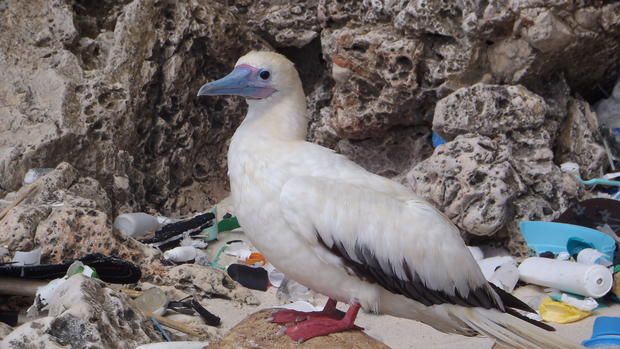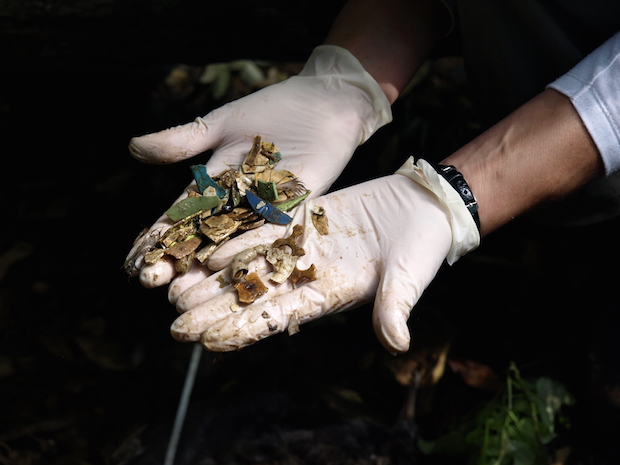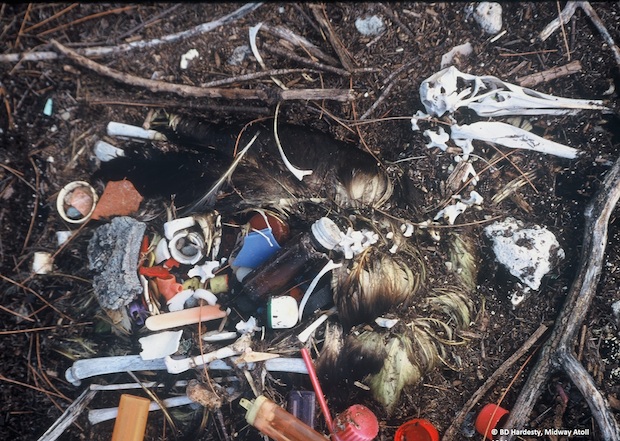Big hazard to seabirds? One word: Plastics
As many as nine out of 10 of the world's seabirds likely have pieces of plastic in their guts, a new study estimates.
Previously, scientists figured about 29 percent of seabirds had swallowed plastic, based on older studies. An Australian team of scientists who have studied birds and marine debris for decades used computer models to update those figures, calculating that far more seabirds are affected, according to a new study published Monday in the journal Proceedings of the National Academy of Sciences.
"It's pretty astronomical," said study co-author Denise Hardesty, senior research scientist at the Australian federal science agency. She said the problem with plastics in the ocean is increasing as the world makes more of the stuff. "In the next 11 years we will make as much plastic as has been made since industrial plastic production began in the 1950s."
The researchers combined computer simulations of locations of the garbage and the birds, as well as their eating habits, to see where the worst problems are. Their data is the latest to highlight the challenges facing seabirds, whose numbers have declined significantly in recent decades.
Hardesty and her colleagues found that the biggest problem strangely isn't where there's the most garbage, such as the infamous garbage patch in the central north Pacific Ocean. Instead it's where there's the greatest number of different species, especially in the southern hemisphere near Australia and New Zealand.
"We are very concerned about species such as penguins and giant albatrosses, which live in these areas," Erik van Sebille, a co-author on the paper from the Grantham Institute at Imperial College London, said. "While the infamous garbage patches in the middle of the oceans have strikingly high densities of plastic, very few animals live here."
Areas around North America and Europe are better off, Hardesty said. By reducing plastic pellets, Europe is even seeing fewer of those plastic bits in one key bird, the northern fulmar, she said. Some species of albatross and shearwaters seem to be the most prone to eating plastic pieces.
Berry Mulligan, an international marine program officer for Birdlife International who did not take part in the study, said the findings demonstrate the scale of the problem with plastics and the many challenges encountered by seabirds.
"This study raises real concern about the potential impact of rapidly growing marine plastic pollution," Mulligan told CBS News. "A review by BirdLife International found that the world's seabirds are more threatened than any other group of birds. They are subject to multiple threats, including marine pollution, introduced alien invasive predators which influence breeding colonies, and fisheries impacts due to overfishing and accidental capture in fishing gear, known as bycatch."
Birds mistake plastic bits for fish eggs, so "they think they're getting a proper meal but they're really getting a plastic meal," Hardesty said.
Usually it's incredibly tiny pieces of plastic, but Hardesty has seen far bigger things, such as an entire glow stick and three balloons in a single short-tailed shearwater bird.
"I have seen everything from cigarette lighters ... to bottle caps to model cars. I've found toys," Hardesty said.
And it's only likely to get worse. By 2050, 99 percent of seabirds will have plastic in them, Hardesty's computer model forecast. That prediction "seems astonishingly high, but probably not unrealistic," said American University environmental scientist Kiho Kim, who wasn't part of the study but praised it.
The problem of plastics in the oceans is huge problem, with one study earlier this year estimating there was 269,000 tons of it in the oceans. Still, Hardesty said there are things that can be done to help alleviate the problem and reduce the threat to seabirds.
"Even simple measures can make a difference, such as reducing packaging, banning single-use plastic items or charging an extra fee to use them, and introducing deposits for recyclable items like drink containers, she said. "Efforts to reduce plastics losses into the environment in Europe resulted in measureable changes in plastic in seabird stomachs with less than a decade, which suggests that improvements in basic waste management can reduce plastic in the environment in a really short time."


